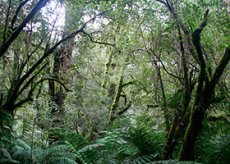New publications
Overly dense forests are just as much a problem for the environment
Last reviewed: 02.07.2025

All iLive content is medically reviewed or fact checked to ensure as much factual accuracy as possible.
We have strict sourcing guidelines and only link to reputable media sites, academic research institutions and, whenever possible, medically peer reviewed studies. Note that the numbers in parentheses ([1], [2], etc.) are clickable links to these studies.
If you feel that any of our content is inaccurate, out-of-date, or otherwise questionable, please select it and press Ctrl + Enter.

Environmentalists are not only worried about the massive felling of trees. As it turns out, too much green space is also unsafe, as it can lead to drought.
"Forests are the lungs of the planet" - we were taught at school, so they need to be protected and defended. But what will happen if there are too many forests? Large amounts of greenery on a limited area of land can cause the soil to dry out. Why? Is it worth explaining why plants need the moisture they get from the depths? With water, trees receive nutrients. Moreover, most biochemical processes are impossible without it.
But such processes consume about 1% of the moisture coming through the root system. The rest of the water evaporates through the leaves - without this phenomenon, called transpiration, the tree would not be able to exist either. The constant circulation of moisture ensures its presence in plant tissues, allowing it to circulate from the lower sections to the upper ones.
Now ecologists suggest imagining that in some dry region where there is a lack of moisture, green zones are expanding. The mass of plantings sends huge volumes of water into the atmosphere. At the same time, it is unknown when this water will be able to return to the soil with precipitation. If the region is characterized by long dry seasons with a complete cessation of precipitation, then large forests can turn into big problems.
An example is the forests growing in California's Sierra Nevada range. Scientists from the University of Merced analyzed changes in total transpiration in green areas located in the Kings River and American River basins over an 18-year period. The ecologists then compared the volumes of moisture evaporation and the dynamics of forest fires.
It turned out that during the times when there were severe forest fires, the ecosystem saved more fresh water. If the forests burned less often, then the savings became smaller (respectively, 17 billion tons of water and 3.7 billion tons annually). In general, over eighteen years, the water supply of the Sierra Nevada rivers increased by 10% in dry years - due to the thinning of forests by fires.
Humanity is used to evaluating forest fires only from a negative point of view. But in fact, as scientists say, this is a kind of natural selection necessary to stabilize the ecosystem. Of course, too frequent fires are not good in any case. But the absence of such makes forests excessively dense, and the dry period can become even drier, because the huge mass of plantings sends tons of moisture into the atmosphere.
Thus, timely thinning of forests will lead to the filling of local rivers and other water bodies, and the period of drought will pass more comfortably - first of all, for the forest inhabitants themselves.
The problem is described in the pages of Ecohydrology (https://onlinelibrary.wiley.com/doi/10.1002/eco.1978).
